Written by Tom Morgan. Posted in Rides
I wandered out of the Moscow airport in just a sweater to see how it felt. Getting a taste of what the Russians mean by “cold†made me suddenly a little less sure this whole thing was such a good idea. This -40°F air felt like I'd inhaled a porcupine, and “SHIT!!!†was about all that came out of my mouth! But, there was no turning back, we had already committed to this trial test of the Siberian Ice Run.
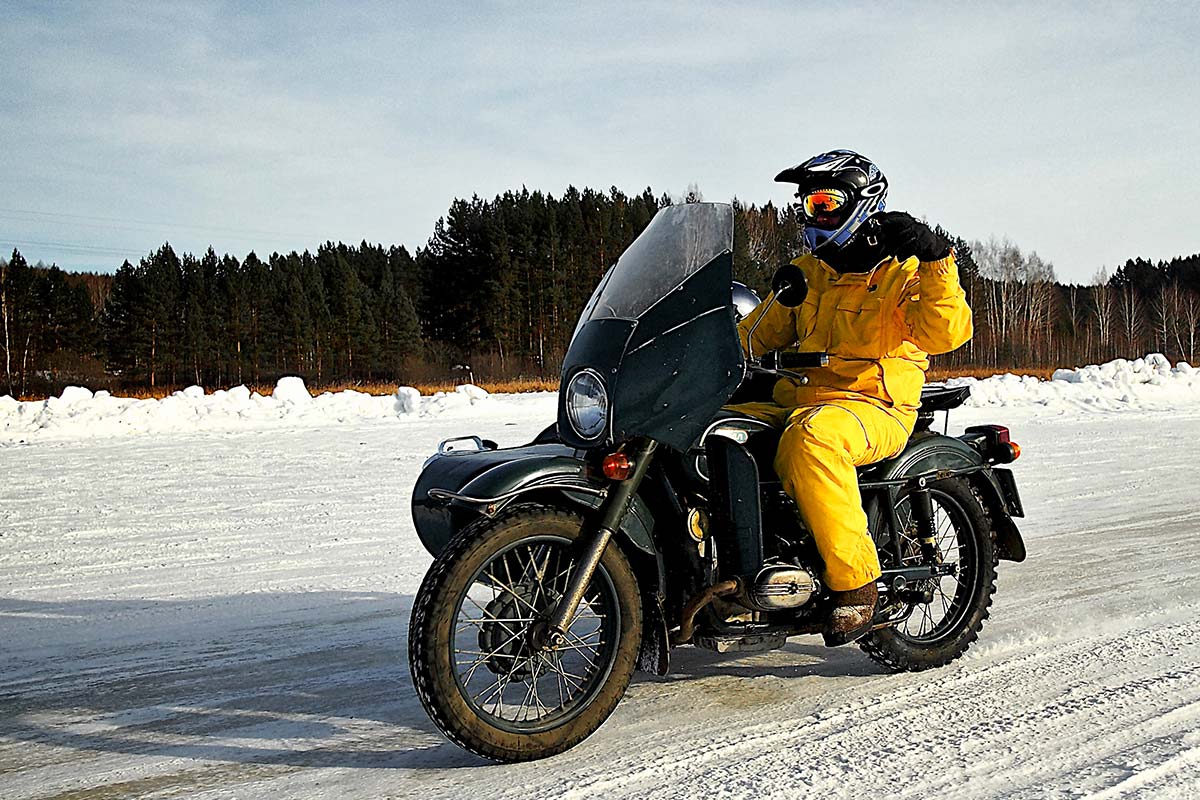 Brit Nick Dodd during test driving before the adventure began.
Brit Nick Dodd during test driving before the adventure began.
At The Adventurists, before we unleash any new barrage of stupidity upon the public, we like to test these new adventures on ourselves. If we make it back with a reasonable number of limbs, we open it up to people who have done our adventures before. Then, if they come back with wildly exaggerated tales of adventure, big smiles and a good limb ratio, we open the new adventure up to all those who wish to inflict it upon themselves.
I heard that there are many towns in northern Siberia only accessible in winter when the rivers freeze over. So, a vague plan was hatched to set up a new adventure, heading north across the Siberian hinterlands, following one of the frozen rivers that squiggle their way to the Arctic Circle.
For years I'd seen Ural motorcycles from a distance, most were in bits by the side of the Gobi Desert track, or getting a beating from angry locals when they refused to behave. A hand-made antique machine, little-changed since the design was borrowed from the BMW R71 in the 1940s. I think that's all part of their magical charm. Rubbish they might be, but they make for the most excellent adventuring vehicles.
At this point I should probably confess to being rather under-qualified to write for this magazine. Until the moment I actually stood next to a Ural (in -40°F weather, outside a crumbling garage in Siberia, with Valody the owner expecting me to test ride it), my experience on motorbikes was limited to 12 meters in a straight line on a Honda C70, through my parents fence at the age of 15.
Valody waved at a fancy new Yamaha that sat glumly next to the Ural and explained it was a “useless piece of shit.†He had to warm the Yamaha up and tinker with it to keep her rolling…. but the Ural “would start first time.â€
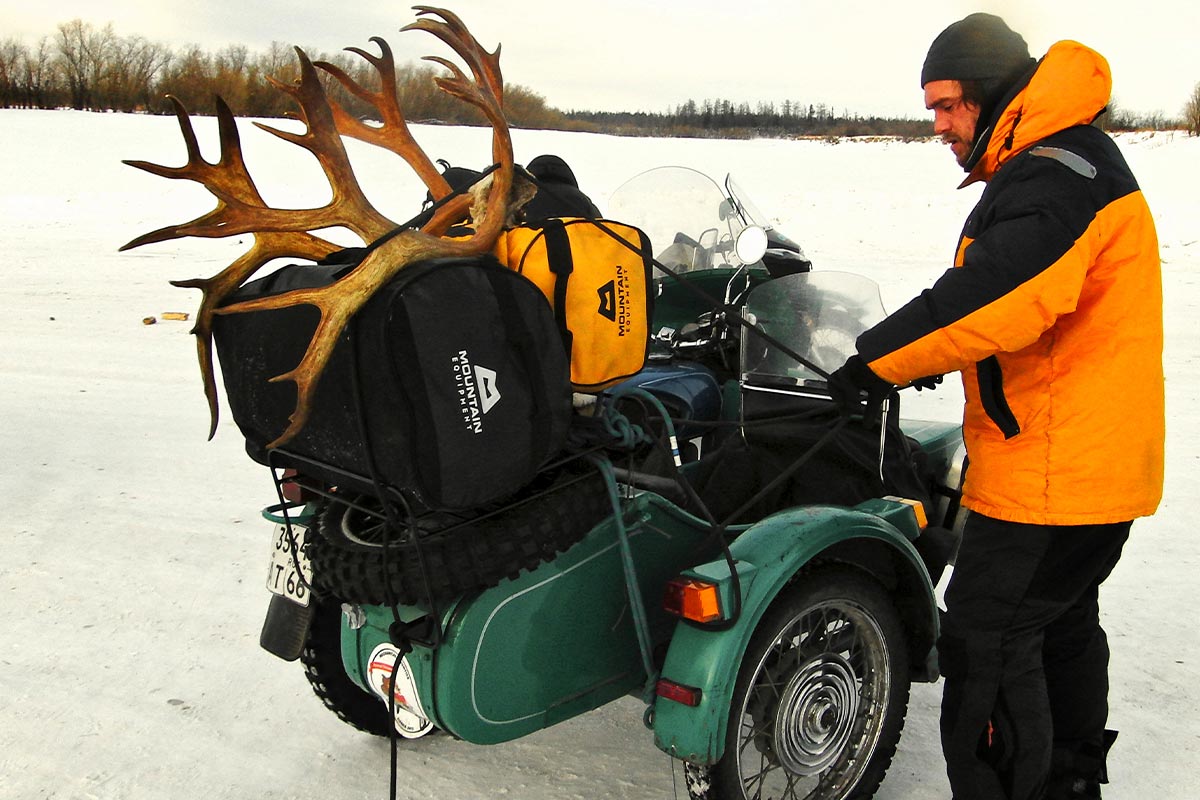 Brit Will Kemble-Clarkson was given a huge set of antlers as a wedding gift after going hunting with a local Siberian family. Will was due to marry his Canadian teammate and fiancée, Tara, on their return to the U.K. Now they have an impressive ornament for the mantelpiece.
Brit Will Kemble-Clarkson was given a huge set of antlers as a wedding gift after going hunting with a local Siberian family. Will was due to marry his Canadian teammate and fiancée, Tara, on their return to the U.K. Now they have an impressive ornament for the mantelpiece.
By “first time†he meant the thirteenth time. But, it did start when cold, whereas I was assured that the Yamaha would have collapsed into a bag of freeze-dried engine parts. So, I hopped on and pretended to know what I was doing.
Then promptly drove it into a snow bank—conveniently out of anyone's view—before riding it back to the expectant crowd. With no knowledge to base the purchase on, I gave the old beast a knowing nod, pointed my thumb up and handed over a wad of notes. I was now the perplexed owner of a 1993, Ural and sidecar in a fetching sort of toilet cubicle green.
Three of us had assembled in Siberia to try this thing out. Me, a spindly friend, Buddy, and Antonia, head of logistics at The Adventurists, whose job it was to glean something useful from the trip while Buddy and I had the enviable task of discovering if it was fun.
1,500km of packed snow, frozen rivers, and winter roads stood between us and the Arctic. We had little idea where we were going, didn't know where the next village would be, had only enough food for half a day, and only half a tool kit. Helpfully, all the locals had told us we would die from the cold. It's always bloody cold in the Siberian winter, and they regaled us with heart-warming tales of regular deaths and the closing of winter roads because they couldn't be bothered to collect the human icicles.
The Russians are not as fond of Urals as I am. They're not so interested in the vintage charm or the fact that the new models are actually very reliable. So, when we rolled in, “stupid†was a word we heard a lot of. But, as soon as the tires on our engineering marvel left tarmac for the last time, everything turned a delightful shade of incredible fun.
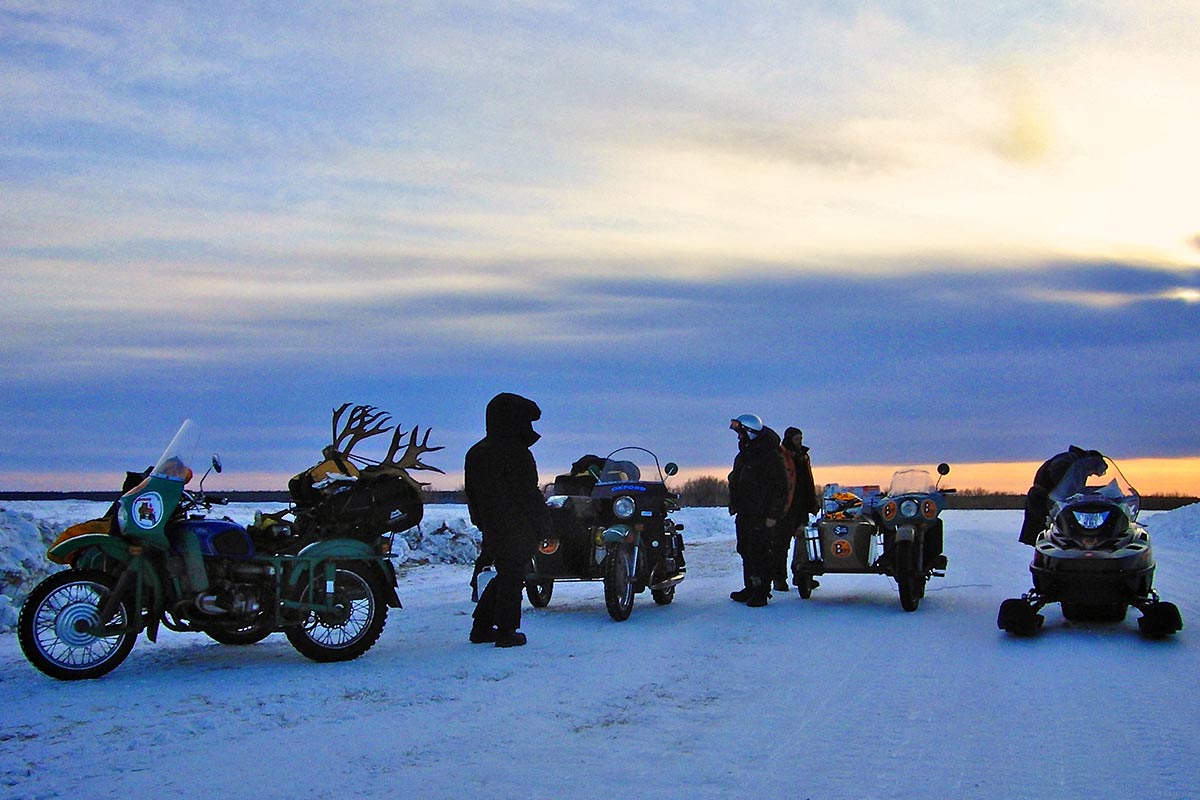 Ice Run teams stop at sunset on an ice road to chat to a local passing by on a snowmobile, a popular way to get around in frozen Siberia.
Ice Run teams stop at sunset on an ice road to chat to a local passing by on a snowmobile, a popular way to get around in frozen Siberia.
Driving the snow-packed roads, along sheets of ice and frozen rivers, with the roar of a vintage 650cc motorbike beneath, it's really indescribably good fun. All the more so for not really knowing where we are going, or what we'd do when we got there. But after a few kilometers we got the hang of it—thundering round corners sideways, spinning out of control into snow drifts, jumping off rises… almost forgetting about being c-o-l-d.
By the second day we had gone through 23 spark plugs and lost many hours trying to get the carburettors to work. The incredibly friendly locals always came out to help us when we broke down near a village, but nobody seemed to be able to get her up to scratch. In the end we gave up trying and just stuck to treating spark plugs like toilet paper, swapping them out every time we stopped.
While roughly following the Ob River, I got a taste of riding in the sidecar and realized the blissful luxury I had had as the driver. Not only is sitting in a sidecar off-road, at speed, over ice, terrifying—it's unbelievably c-o-l-d! As the days wore on we found the one fetal position that kept us vaguely not as cold, and swapped around at regular intervals.
 As our test adventure came to a close, we pulled in to refuel for the last time. The plucky owner of the garage gave a cursory glance at the bike and pulled out the carburettor float. Sure enough, it had a hole in it. So, with the bike finally singing like a dream we drove it the last 107 yards into the garage of a local chief of police, and left our untrusty beast.
Did we make it to the Arctic Circle? Nope. But the point had been proven. Stumbling through tiny Siberian villages, coming across wolves, machine guns, freezing cold, breakdowns, consuming vodka on an industrial scale, and experiencing some of the world's most hospitable humans, all played a part in cementing the result of our test run. Yes, this really was a good idea!
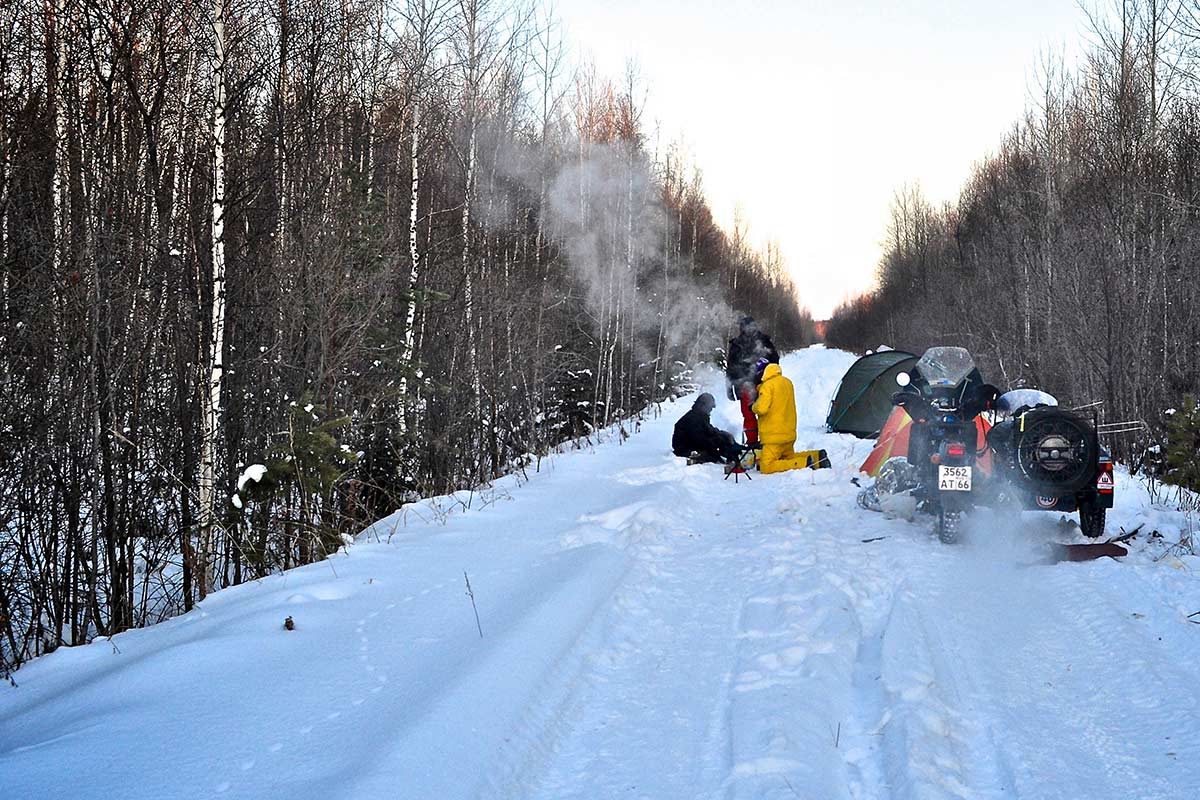 Lost on the second day out: Nick Dodd, in yellow, with convoy mates.
Lost on the second day out: Nick Dodd, in yellow, with convoy mates.
Subsequently, we made it back to the Adventurists' HQ to create a proper adventure open to all—and the Siberian Ice Run was born: Starting from the iconic Ural factory, in a tiny town of Irbit in Southern Siberia, our teams would head north to Salekhard on the Arctic Circle.
There would be no prize for coming first, there would be no set route, no carefully-marked course… just a hope that the teams would set forth and find their own adventures. And, like all our adventures, the Siberian Ice Run is not just about having an amazing adventure for yourself—it'll raise buckets of money for charity. And so far, our adventures have raised over six million USD for charities around the world (see sidebar).
For anyone who likes machines, the Irbit Ural factory is worth a visit. Since the mid-2000s Urals have become very reliable. They still make almost every part by hand—each bike starts life as a pool of molten metal in the foundry out back, and ends up as a bespoke machine.
But, the point of the Siberian Ice Run wasn't to use reliable bikes—we wanted breakdowns in the least convenient locations to add to the adventure. So, we bought a fleet of the older bikes that come with the sort of guarantee of trouble that's somehow very appealing.
The moment finally arrived and our twelve teams of intrepid wallies sputtered off the starting line into the unknown. Very shortly afterwards chaos ensued. I suppose it began in mile two as one team rounded a corner badly and flew off a 15 foot bank with the local TV channel following behind, capturing their departure from the road and broadcasting it to everyone in Siberia as part as their evening news bulletin.
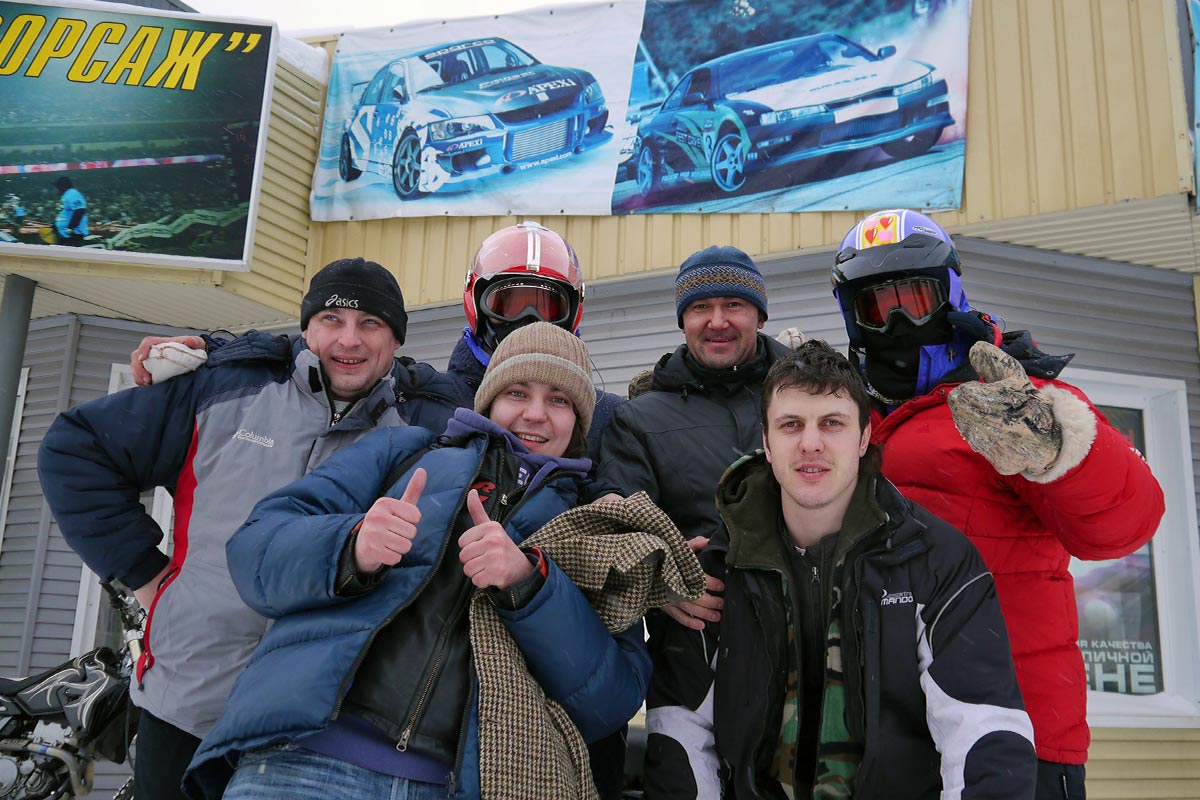 Simon Limpus and team mate hanging out with Siberians on the Ice Run—the teams found friendly locals and amazing hospitality from the launch in Irbit all the way to the Arctic Circle.
Simon Limpus and team mate hanging out with Siberians on the Ice Run—the teams found friendly locals and amazing hospitality from the launch in Irbit all the way to the Arctic Circle.
The unpredictable mayhem carried on for thousands of frozen miles as they all made it to the Arctic Circle, though. Just. Who would believe that one man's crazy idea would be another's utmost adventure of a lifetime.
Here's how a couple of the guys summed up 10 days of Siberia on a Ural:
“The people we met on our way were some of the friendliest I have ever come across. We found ourselves complete strangers in someone's home, with a table full of food and a ready-made bed. The bikes may not have been the most practical, and perhaps February was not the best time of year to travel across Siberia, but all this added to some great stories of the kind that I am sure we will continue to bore others with for a long time.â€â€”Rob Tincknells
“Though there were many tales of close calls and blistering cold, we have done something that every one of us questioned IF we could. Bravado will carry you pretty far, but often reality will prove you wrong. Others will now follow our lead—but we'll always be the first. It's an honor we'll wear like a badge of honor and brag to anyone who will listen for years to come.â€â€”Eric Krause
Team Buff, early on in the adventure, near the village of Zimnik. With space at a premium, fuel was attached wherever possible.
Tom Morgan is founder of The Adventurists and creator of the Siberian Ice Run. Adventurists.com.